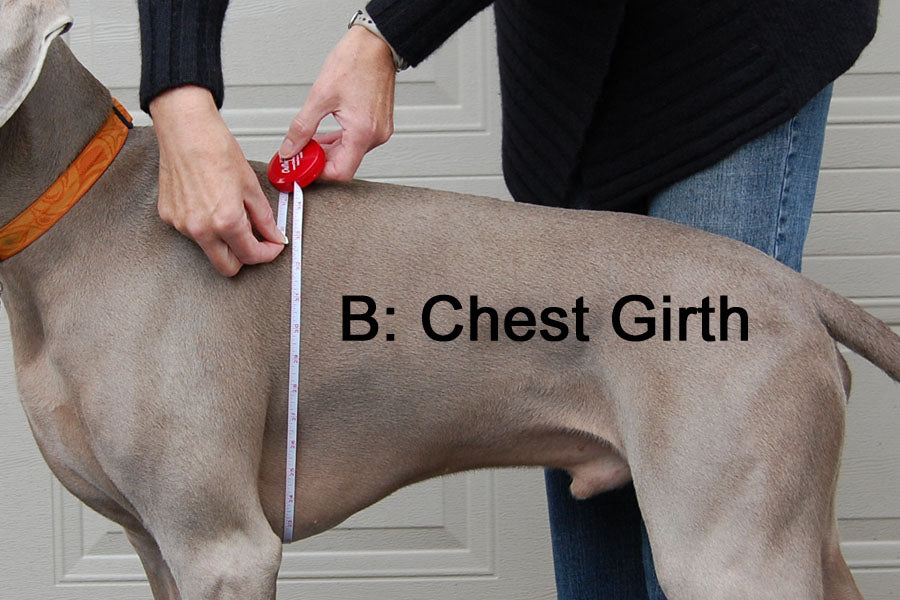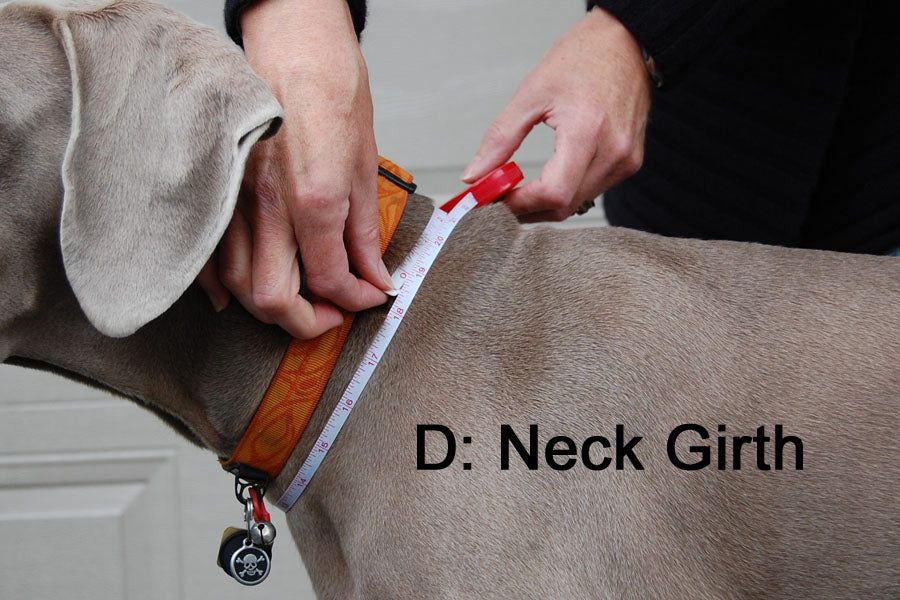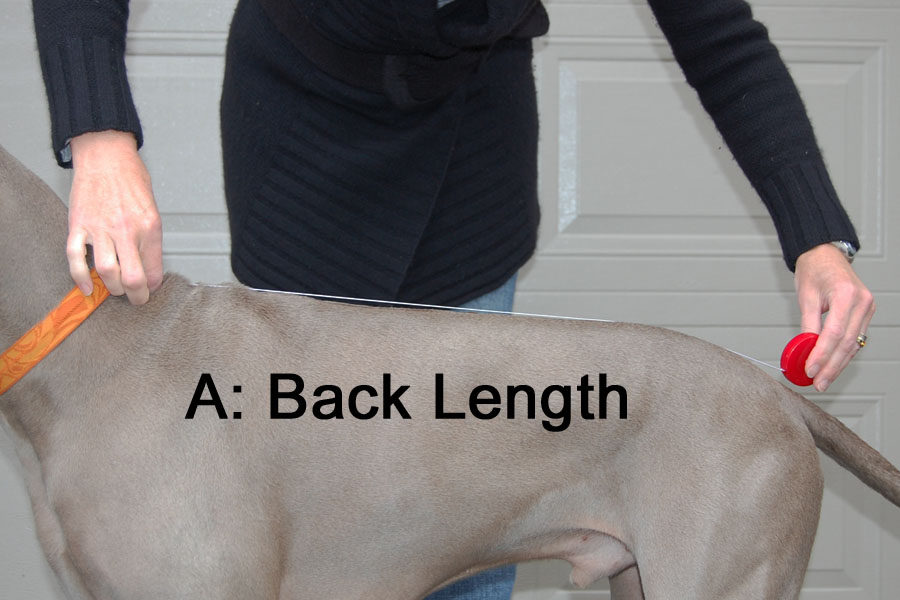To start, you'll need a soft measuring tape or a piece of string.
Metal measuring tapes are not accurate and can be scary for your dog!

Step 1: Measure The Chest Girth
The Chest Girth should be taken at the deepest part of the chest right behind the shoulder blades.
The Chest Girth is the most important measurement. A coat that is too large in the chest will be baggy and allow snow and moisture to get in and could get caught on branches as the dog is running. A chest girth that is too small won't sufficiently cover your dogs underbelly. A chest girth that is just right will allow for good coverage and adjustability up and down.

Step 2: Measure The Neck Girth
The Neck Girth should be taken taken at the base of the neck at the widest point.
The Neck Girth is the second most important measurement. Most of our coats have enough stretch in them to allow for a larger neck girth than what is listed however we don't want it to be too tight on your dog. A neck girth that is on the smaller side of the coat's measurement will allow the coat to slide back a few inches. Keep this in mind when we look at the back measurement next!

Step 3: Measure The Back Length
The Back Length measurement should be taken from the base of the shoulders to the base of the tail.
The Back Length is one of the hardest measurements to get and it is very difficult to do if your dog is wiggly and won't stand up still and straight. You will need two people to obtain an accurate measurement because the dog cannot be turning, sitting, or slouched. Your dog must be standing straight with the head up. Start at the base of the neck (feel for the shoulder blades at the withers, measure from just in front of the shoulder blades) to the base of the tail (rump, not over the tail).
Back length is just a general estimate and should be the last thing we consider when looking at sizes. Because different breeds will have different shoulder and tail placements it is impossible to get a 'one size fits all' sizing based on back length alone. Back Length should be used to help differentiate between Standard and Long & Lean sizes after all other measurements are considered.